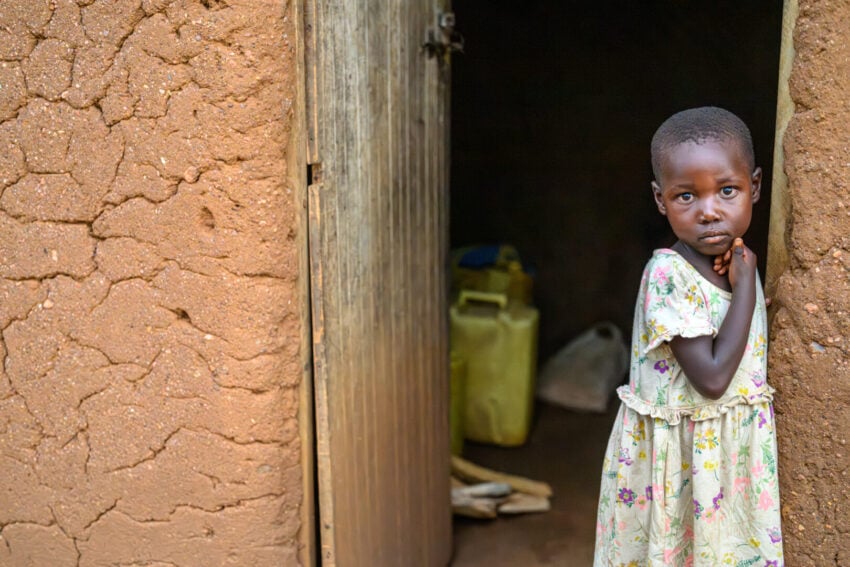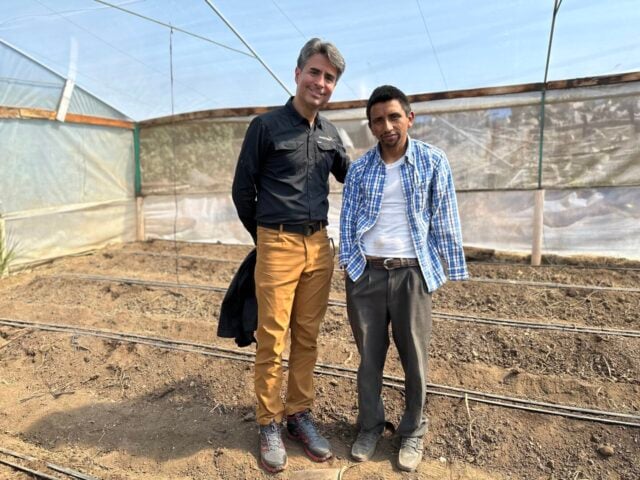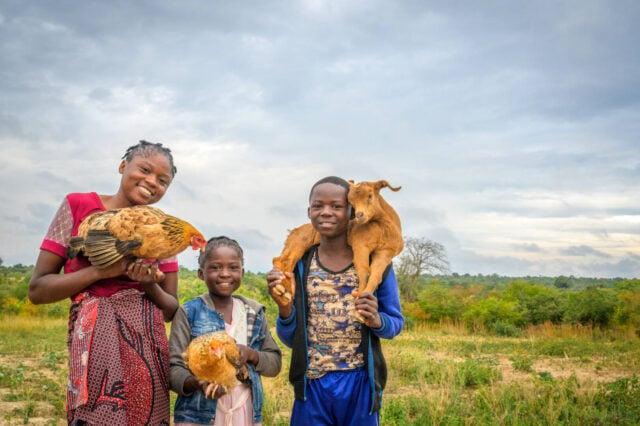Extreme poverty means more than going without. It means living without the basics every human needs to survive — like clean water, nutritious food, healthcare, and education. But at its core, poverty is more than a material lack of resources. It’s about lost potential and the difficult choices no one should ever have to make.
A child may skip meals so that their siblings can eat. Mothers and daughters may walk for hours to find water, knowing the girls may miss school that day. Families are forced to choose between survival and safety, and between meeting urgent needs and holding on to hope for a better future.
But it doesn’t have to stay this way.
Learn more about extreme poverty and solutions that bring lasting change:
- What is extreme poverty, and how is it defined?
- What are the causes of extreme poverty?
- Who is most affected by extreme poverty?
- How does extreme poverty affect children?
- Is extreme poverty getting worse or better?
- What are the most effective solutions to end extreme poverty?
- Can faith make a difference in development work?
- What makes World Vision different in tackling extreme poverty?
- Breaking the poverty cycle: Stories of change
- How can I help end extreme poverty?
What is extreme poverty, and how is it defined?
When we talk about extreme poverty in the world, we’re using the standard set by the World Bank: surviving on less than $3.00 each day. For nearly 700 million people, this isn’t just poverty statistics — it’s their daily reality. That amount simply isn’t enough to pay for food, clean water, or shelter.
Help us end extreme poverty by empowering people through your generosity.
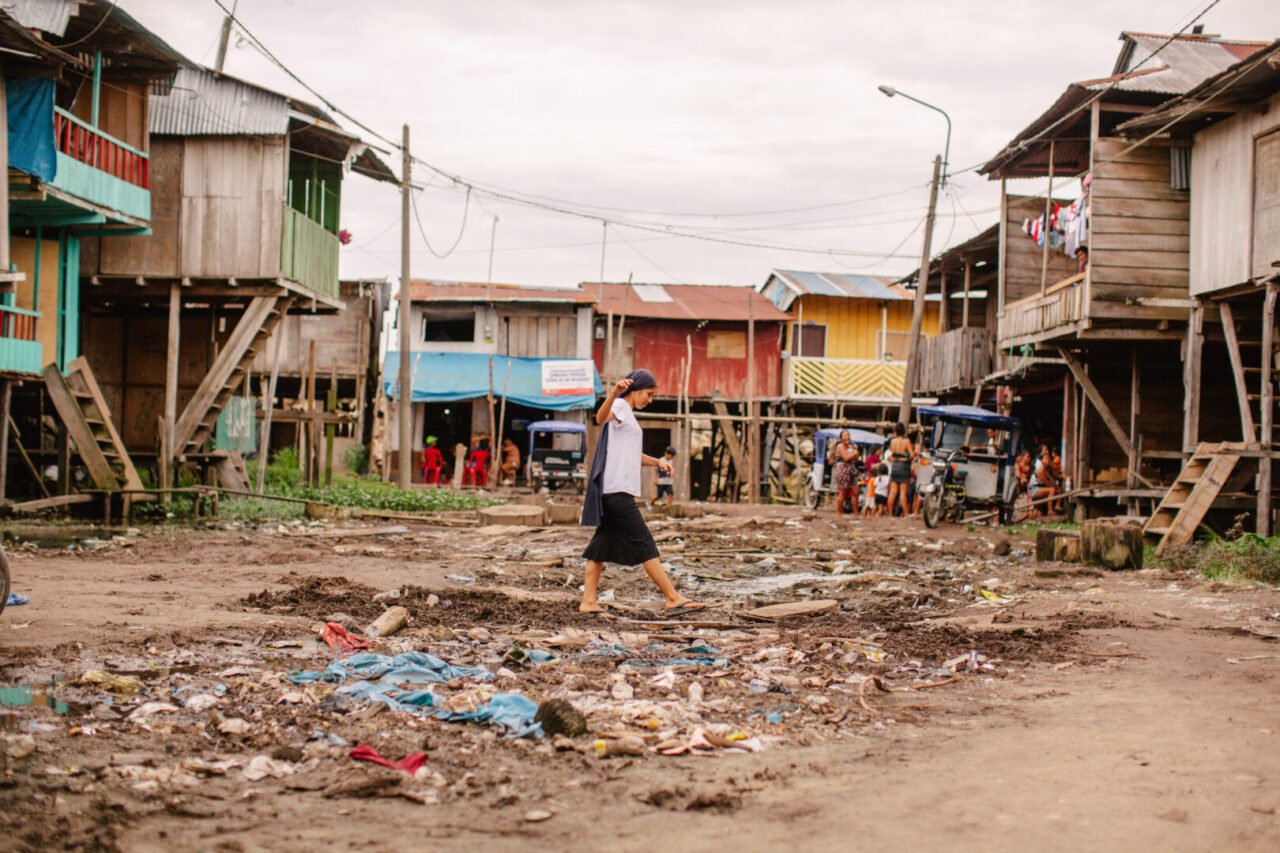
What are the causes of extreme poverty?
There’s no single cause — poverty is a web of connected factors and challenges that keep people trapped in hardship. Among the most common drivers:
- Conflict and political instability displace families and destroy infrastructure.
- Extreme weather events, like droughts and floods, reduce food and water security.
- Lack of education limits income and future economic opportunity.
- Unclean water and poor sanitation spread disease and reduce productivity.

“The biggest challenge that we are facing in this area is lack of access to clean water,” says Anazazi, a mother in Kenya. “… If we had clean water in the community, it would really help us and help us to live a good life.”
Who is most affected by extreme poverty?
Extreme poverty impacts entire communities, but children and women are often hit hardest.
- Children under 5 are especially vulnerable to stunting from chronic malnutrition, which can cause lifelong cognitive and physical challenges.
- Women and girls often walk long distances for water, sacrificing time that could be spent on education or earning an income.
- Families in rural or fragile contexts may lack access to jobs, electricity, safe roads, and clean water sources.
How does extreme poverty affect children?
Poverty and children are tragically intertwined. Extreme poverty limits potential and opportunity. It means going to bed hungry, missing school, and growing up without safe places to play or learn. In recent years, the number of children living in poverty has surged, with an estimated 356 million children now affected globally. That’s more than the entire population of the United States.
For children, the impact of poverty runs deep:
- Malnutrition can delay brain development and learning.
- Lack of education limits future opportunities and earning potential.
- Unsafe living conditions raise the risk of violence, exploitation, and abuse.
Yet children are also the key to breaking the cycle. When a child gains access to clean water, health services, and education, their lives and their communities begin to change and thrive.
Is extreme poverty getting worse or better?
After decades of progress in reducing poverty, gains have slowed, and in some places, reversed, following the COVID-19 pandemic. In some regions, poverty is now worse than it was five years ago.
What are the most effective solutions to end extreme poverty?
Based on decades of research and field experience, these solutions are the most impactful to break the poverty cycle:
- Access to clean water and sanitation
- Empowering women and girls
- Strengthening families through economic and spiritual support
- Supporting local health and education systems
- Partnering with trusted community leaders
Can faith make a difference in development work?
Faith-based poverty relief offers more than material support — it revives hope. World Vision integrates spiritual development into our poverty-tackling work through a curriculum called Biblical Empowered Worldview. This approach helps people understand their worth, purpose, and potential through the lens of faith.
Our Christian identity has shaped how we serve. We partner with local churches not just for physical needs, but to nurture spiritual and emotional healing. This model of faith-based poverty relief deepens trust and long-term impact.
A study from Baylor University found that faith-based organizations often outperform others in building sustainable support systems, due to deep-rooted community engagement and volunteer mobilization.
By partnering with leaders from both Christian and other faiths, we create meaningful change in communities. These leaders use their trusted influence to address important issues such as child protection, public health, and social well-being. Through programs like Channels of Hope, World Vision equips them with training, accurate information, and tools to promote social norms while offering spiritual and emotional support. This approach leads to measurable improvements in health, safety, and community development around the world.
What makes World Vision different in tackling extreme poverty?
We are one of the world’s largest Christian humanitarian organizations, serving children and families in nearly 100 countries.
What sets us apart:
- We stay long-term. Our community partnerships typically last 10 to 15 years, giving time to help build strong local systems and raise up local leaders who can sustain progress.
- Faith-driven, not faith-limited: Motivated by our Christian faith, we serve all people, regardless of religion, race, ethnicity, or gender. Faith inspires our work; it never limits who we serve.
- We multiply impact. Every $1 given is multiplied through grants and partnerships.
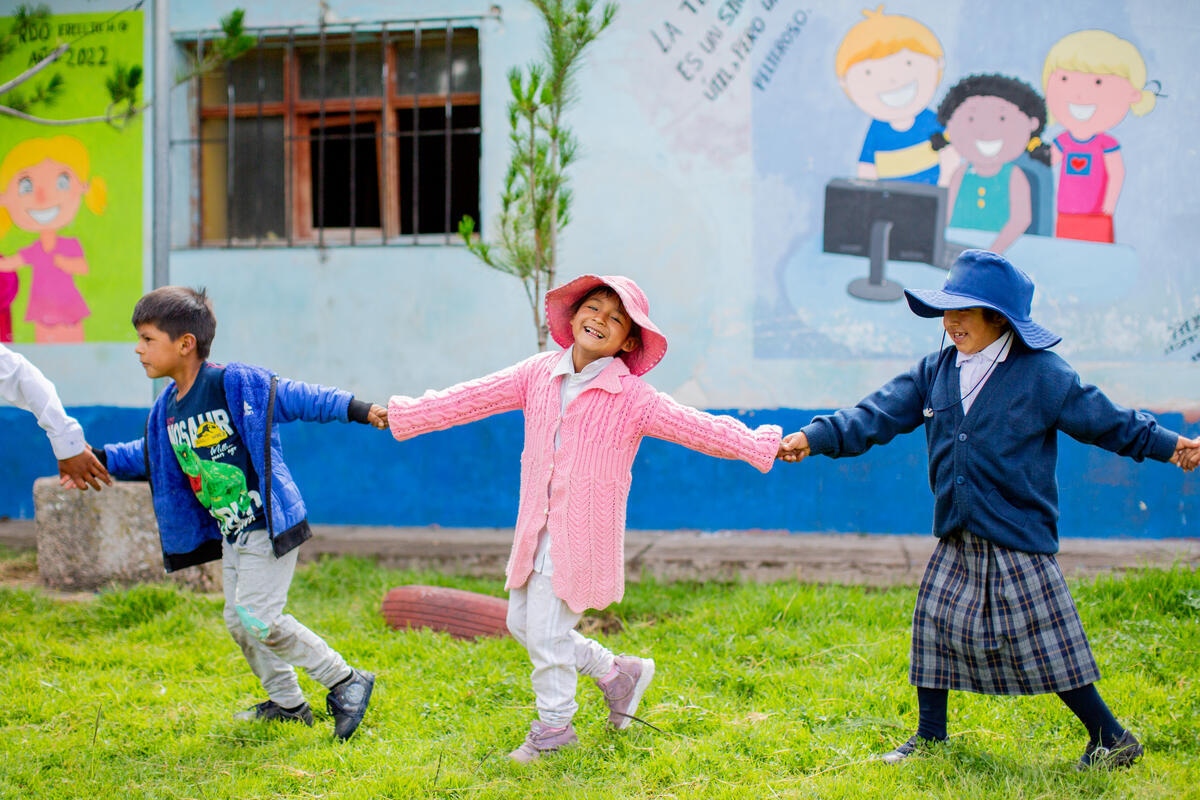
Breaking the poverty cycle: Stories of change
Access to clean water opens the door
One of the simplest ways to break the poverty cycle is by giving families access to clean water. It means fewer missed school days, lower risk of disease, and more time for work and for kids, time to learn and play.
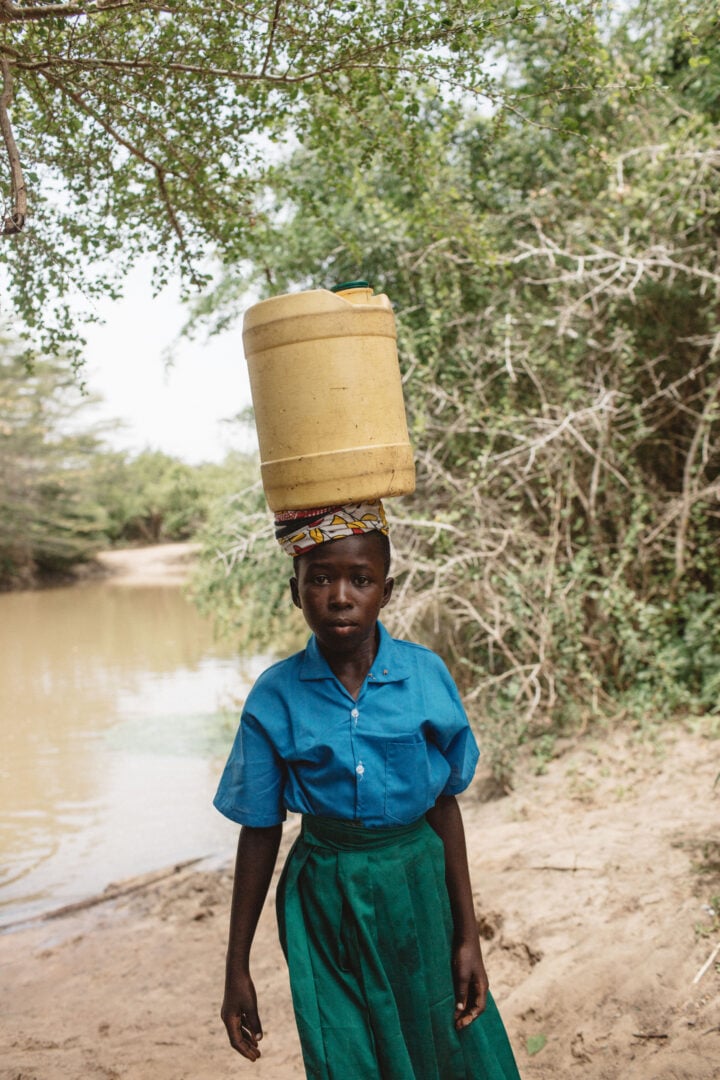
In Kenya, 15-year-old Grace has experienced this. For four years, she and her siblings rose before dawn to gather water from a distant, unsafe source. The burden was physical — carrying more than 22 pounds of water in one haul — and deeply emotional. “I was a little bit scared,” Grace says. “I am scared of the darkness.”
Gathering often caused her to miss school. Contaminated water also made her sick. She says, “I would feel like there is a needle or a thorn poking inside my stomach.”
That changed when World Vision, part of its community development work, installed two water points, including one at Grace’s school. Today, Grace attends classes regularly and dreams of brighter days.
Clean water is more than a basic need: It protects health, restores dignity, and opens the door to education and opportunity.
Stories like Grace’s show the power of simple acts, like access to clean water. Together, we can continue breaking the cycle of poverty for families around the world.
Equipping women and girls changes everything
When women and girls are empowered, entire communities thrive.
In Ethiopia, literacy classes have helped mothers earn income and support their children’s education. In Kenya, thousands of women join savings groups to launch small businesses and build economic resilience.
When one woman is empowered, the ripple effect extends to her family, her village, and the next generation.
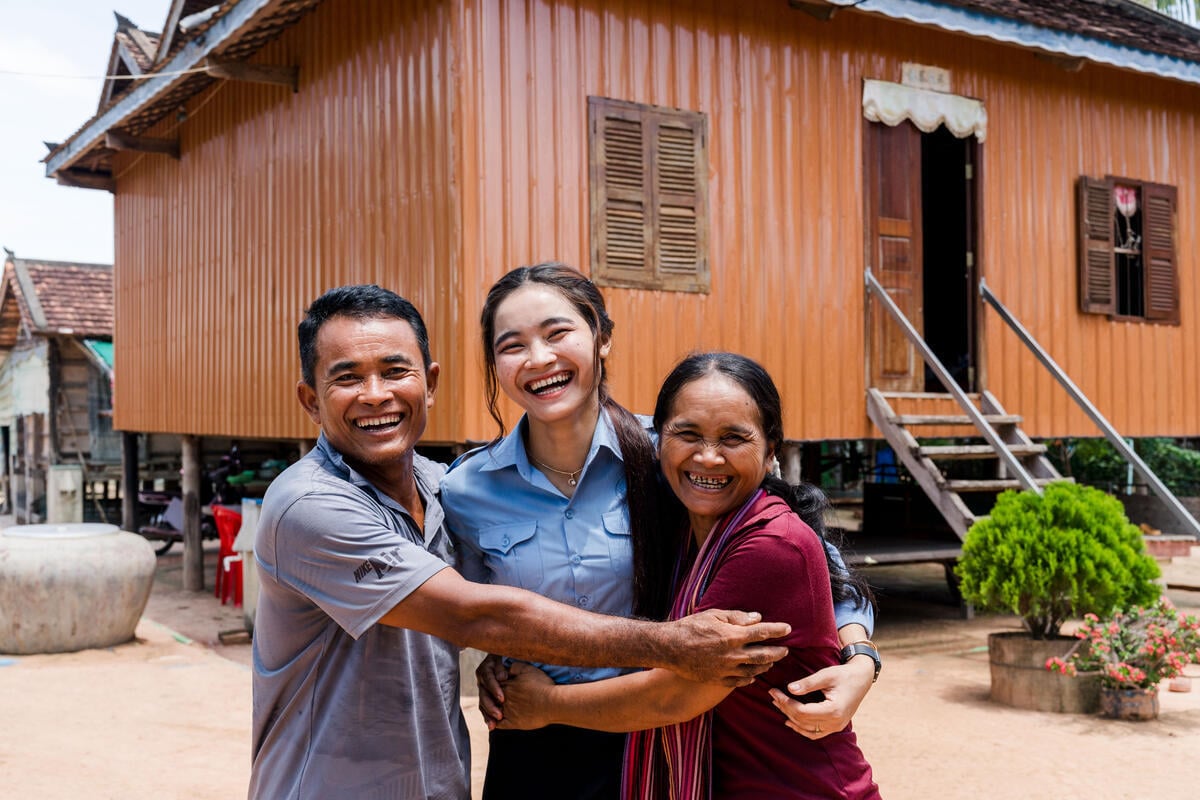
Former sponsored child Phanet (pictured above at age 19) now teaches fifth grade in the same rural Cambodian classroom where she once studied. With support from World Vision’s sponsorship program, her family’s farm grew into a thriving business, and Phanet overcame challenges to pursue her education. Today, she is determined to pass on the gift of learning to the next generation, while continuing to dream for herself.
Faith-based programs help people thrive
Prisca (shown below at age 20), whose confidence had been shaken by unexpected pregnancy and economic pressure, experienced renewal firsthand through World Vision’s Biblical Empowered Worldview training.
“Before [Biblical] Empowered Worldview, I was looking at life in a very narrow way. I thought that earning money was very difficult. Especially after I got pregnant, it’s like I became more closed.”
The training reframed her vision. “[Biblical Empowered Worldview] taught us to see how we can look at life in a broader way and be able to develop ourselves,” Prisca says. “It has helped me to be able to figure out how to improve myself. I’m able to do business on my own and see how I can develop myself.”
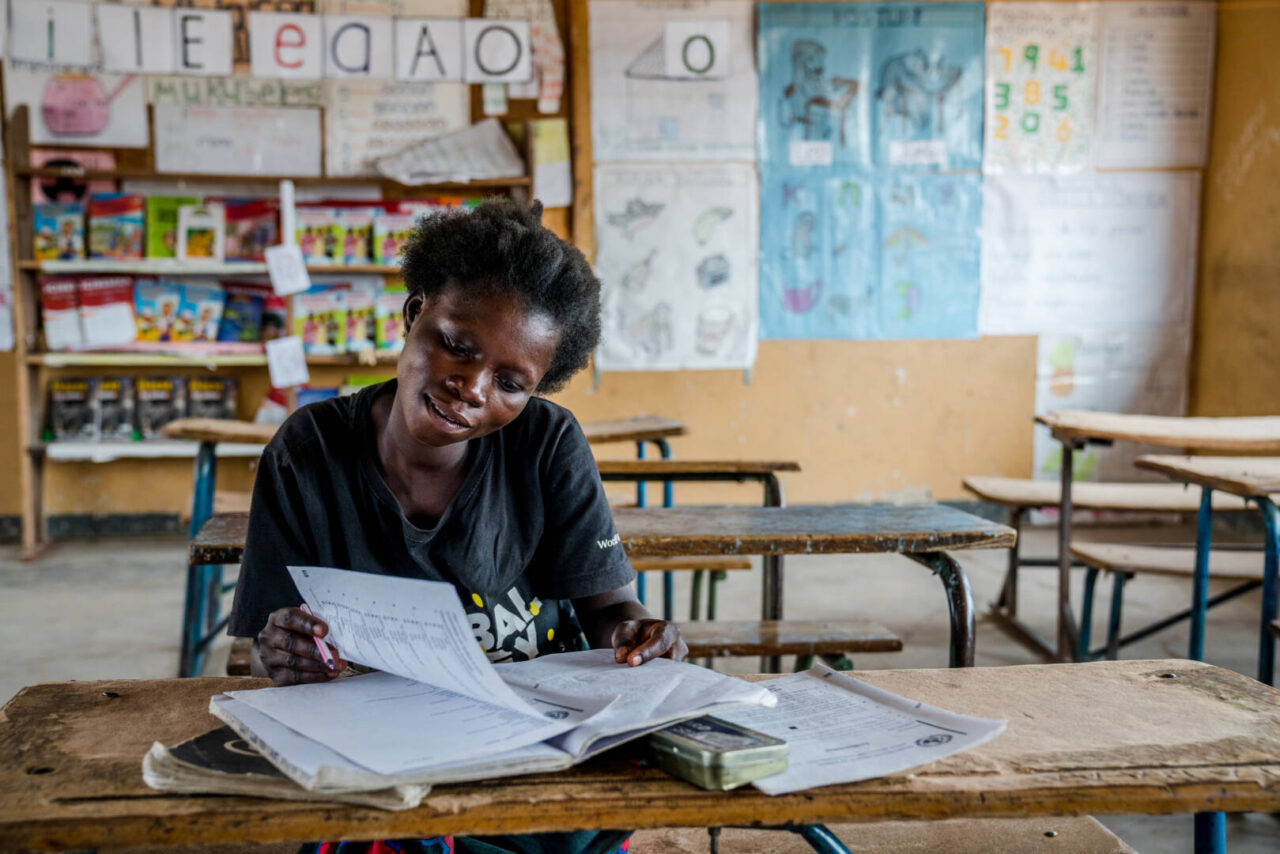
Today, she dreams of becoming a teacher and one day building a home for herself and her son, Lazarus. “Even for my son, I want him to go to school and to be educated so he can even be better than me in the future.”
This is the power of faith in action: practical tools, spiritual renewal, and the chance to reimagine a future beyond poverty.
How can I help end extreme poverty?
Real change starts with informed action. You can:
- Sponsor a child
- Support clean water, health, and educational programs
- Advocate for policies that reduce extreme poverty
- Pray and share stories that inspire
